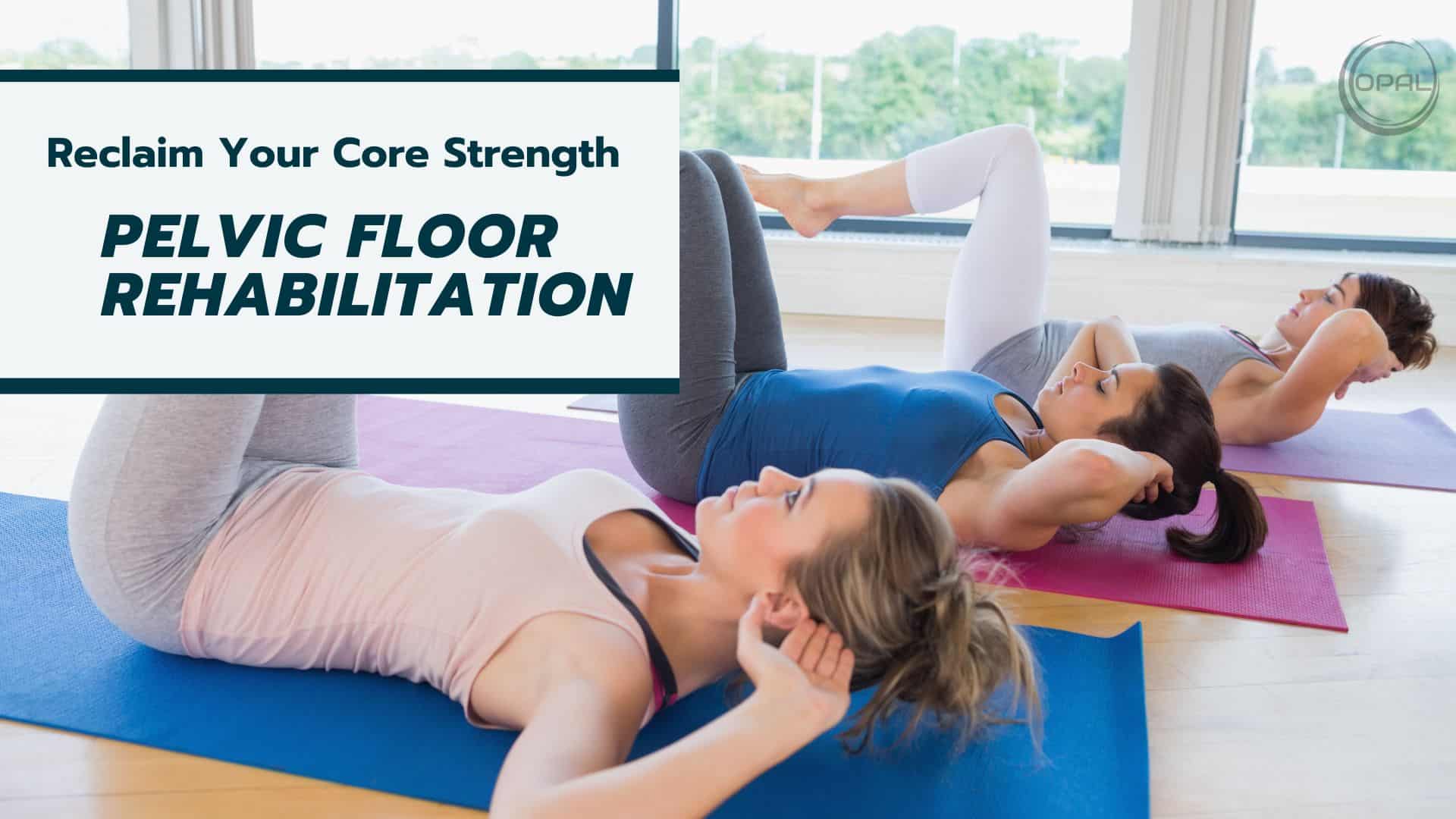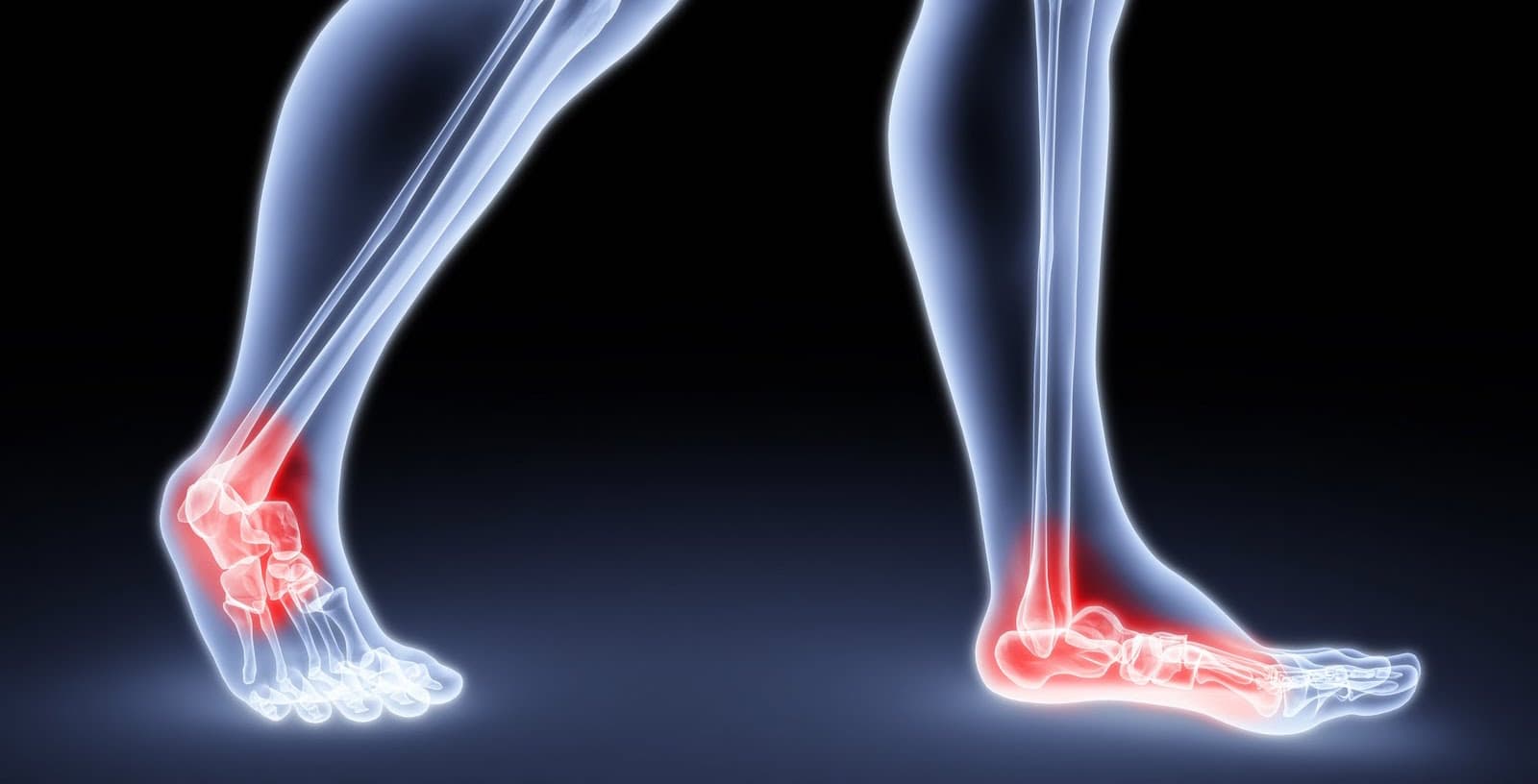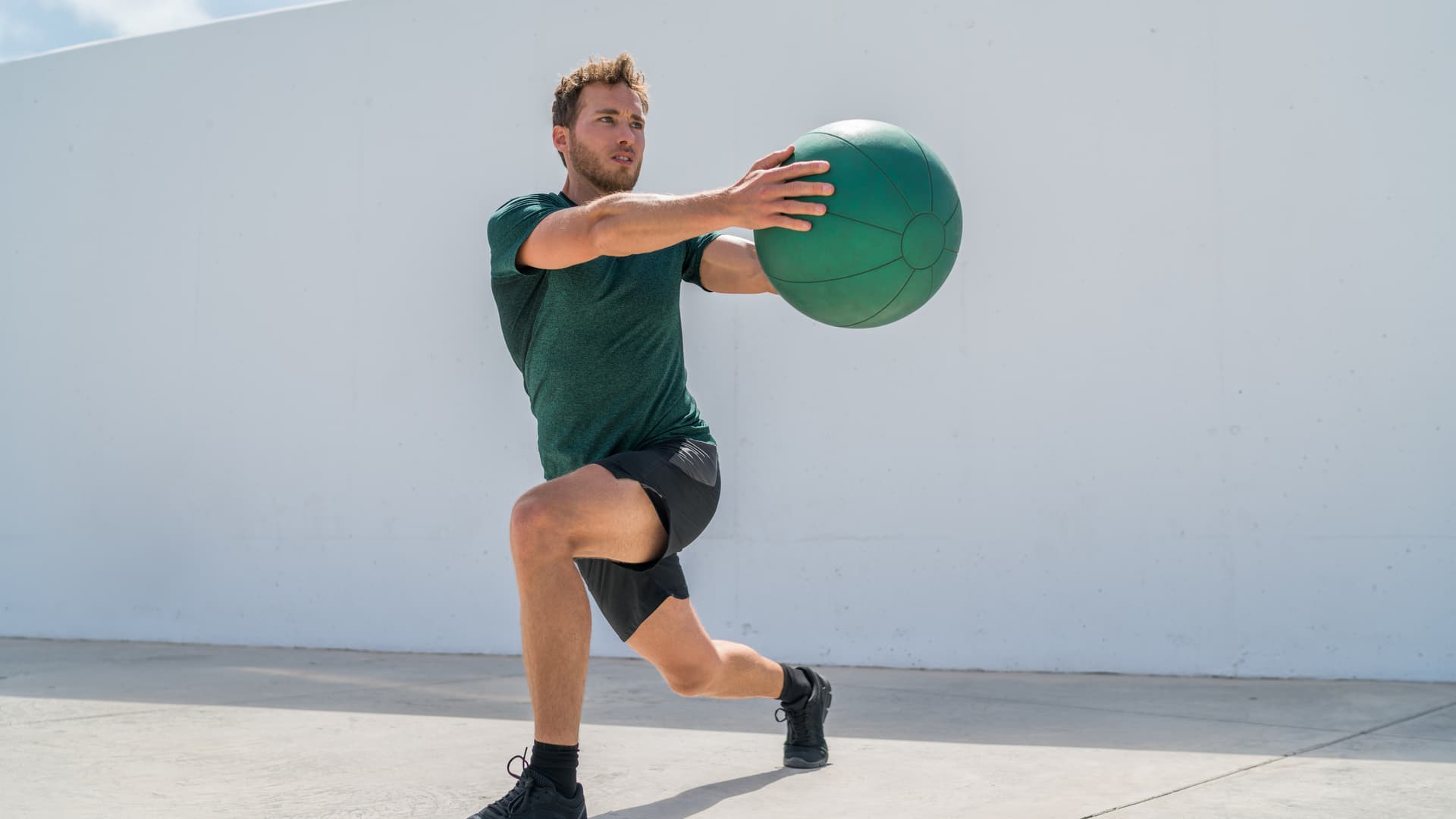Pelvic Floor Rehabilitation: Strengthen Your Core and Reclaim Your Confidence
Introducing the power of pelvic floor rehabilitation
When it comes to our health and well-being, it can be easy to focus on our physical appearance and ignore the internal work that goes through in our bodies.
But what if we told you that a crucial part of your anatomy could be holding you back and that unlocking its full potential could transform your life?
Enter the world of pelvic floor rehabilitation, where awareness, proactivity, and the right treatment can make all the difference.
In this article, we’ll decode pelvic floor physiotherapy and rehabilitation: what it is; why you should consider getting treatment; who should be involved in your care; how they can help.
Unlocking the secrets of pelvic floor health through rehabilitation
The pelvic floor is a crucial part of the core muscles and vital to every woman’s anatomy. It supports the internal organs and plays a significant role in controlling the bladder, facilitating bowel movement, and enhancing sexual function.
Unfortunately, many women are unaware of issues with their pelvic floor until symptoms such as incontinence, pain during sex, tailbone pain, low back pain, discomfort during urination or defecation from muscle tension, pelvic floor muscle weakness, or childbirth-related overuse injuries.
But don’t worry: There are ways for you (and all women) who want to improve their pelvic health without surgery or medications!
The key lies in seeking out the proper treatment and a therapist who specializes in women’s health issues like these so they can help unlock your full potential.
How do I strengthen my pelvic floor?
This can be achieved through specialized treatments using hands-on techniques like specific muscle release combined with exercises designed precisely for this purpose which can help strengthen those muscles responsible for supporting the organs inside our lower abdomen and the pelvic area known collectively as “the core.”
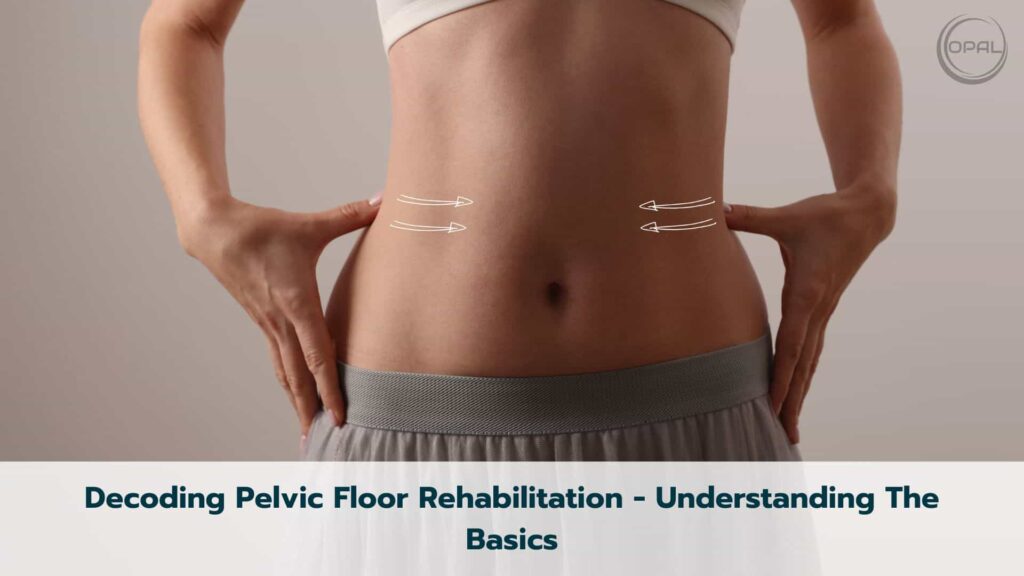
Decoding pelvic floor rehabilitation – understanding the basics
Pelvic floor rehabilitation is an approach to pelvic health that focuses on unlocking the secrets of your body and helping treat pelvic muscles and any pelvic floor dysfunction.
Common pelvic floor dysfunctions that may require pelvic floor rehabilitation include incontinence, acute or chronic pelvic pain, painful intercourse and pelvic organ prolapse.
If you’ve ever experienced one or more of these symptoms, you probably have some idea that something isn’t right down there.
Various factors, such as pregnancy and childbirth, aging, hormonal changes from menopause, obesity, and pelvic or abdominal surgery, can cause these conditions. Any of these can have a significant impact on your quality of life. The good news is that there are treatments available.
The first step toward reclaiming your core strength and regaining control over your body’s function is understanding the pelvic floor muscle, why it’s essential, and how to recognize common issues that may require rehabilitation.
A pelvic floor is a group of muscles and tissues that form a hammock-like structure in the lower part of your pelvis. This seemingly small area greatly impacts your health, playing a crucial role in supporting your bladder, uterus, and rectum, as well as helping you maintain control over your urinary and fecal functions.
The Pelvic floor rehabilitation journey involves a series of assessments to identify the issues and treatments tailored to your specific needs and condition, often led by a pelvic health physiotherapist.
Rehabilitation may include pelvic floor therapy, manual therapy, electrical stimulation, biofeedback and functional muscle retraining. Also, the vital part of the journey involves your commitment and lifestyle changes to support your recovery.
With these approaches, you can reclaim your core strength and take control of your overall well-being.

The power of awareness and proactivity
The power of awareness and proactivity is an integral part of reclaiming your core strength through pelvic floor rehabilitation. It’s easy to ignore the signs of a pelvic floor disorder, but it’s essential to be aware of them to take proactive steps toward recovery.
Awareness starts with understanding the signs and symptoms of pelvic floor issues.
Early detection is key: Understanding symptoms and recognizing the need for help
Early detection is vital for pelvic floor issues, and understanding the symptoms is the first step to recovery. If you experience any of these symptoms or problems, it may be time to seek help. These can include:
- Frequent urination.
- Urge incontinence – leaks with a strong urge to urinate.
- Difficulty starting or stopping your stream.
- Stress incontinence –Urinary leakage during physical activity or coughing and sneezing.
- Persistent pelvic pain.
- Pain during sexual intercourse or exercise.
- Difficulty with bowel movements and/or gas pains in the lower abdomen.
By taking a proactive approach to your health and seeking treatment as soon as possible, you can reduce the severity of your symptoms and improve your chances of a successful outcome.
Conversely, ignoring your pelvic floor problems will only worsen them and potentially lead to more persistent health issues.
The urgency of seeking treatment: Don’t let pelvic floor issues hold you back
Pelvic floor problems can profoundly impact your daily life, affecting your ability to exercise, work, and engage in social activities. You may feel embarrassed or ashamed and avoid seeking help for fear of judgment.
But the truth is, pelvic floor issues are prevalent, and there is no shame in seeking help. Don’t let these issues stop you from living your life to the fullest.
Finding your perfect pelvic floor physiotherapist
You’ve decided to reclaim your core strength, and you’re ready to get back in the game and work on strengthening your pelvic floor; the journey starts with finding the right therapist. But how do you know where to begin with so many options there?
Let’s explore a few details about a skilled professional’s qualities and tips for discovering a pelvic health physiotherapist that suits your needs.
Finding a therapist who specializes in your condition.
Experience is Key! A therapist with a wealth of experience in your specific condition can make all the difference. Not only will they have a better understanding of what works and what doesn’t, but they’ll also be able to develop a personalized plan for your recovery.
So, look for a therapist who has treated patients with similar issues and is up to date on the latest research and techniques in a pelvic floor rehabilitation program.
Check their Credentials: Choosing a therapist who has received proper training and certifications is essential. Look for a physical therapist with additional certifications in pelvic health physiotherapy or women’s health.
Word of Mouth is Golden: Ask around for referrals from friends, family members, or your healthcare provider. Personal recommendations are often the best way to find a trustworthy and effective therapist.
Consultation is Crucial: Having an initial consult to determine if they’re the right fit for you. Take advantage of this initial consultation to meet with the therapist, ask questions, and get a feel for their approach.
Comfort is Fundamental: Your therapy environment should be comfortable and welcoming, making you feel at ease. In addition, you should be confident in your therapist, their staff, and the equipment and facilities they use.
In conclusion, finding the right therapist is essential to your pelvic floor rehabilitation journey. But don’t rush into it – take your time and choose someone you feel will help you reach your goals.
Learn More about Pelvic Floor Therapy Appointment and What to Expect
Personalized treatment: The key to success
One size does not fit all when it comes to pelvic floor rehabilitation, and a customized treatment plan is vital to achieving optimal results.
Your therapist will work with you to develop a plan that takes into account your individual needs, goals, and medical history.
By taking a personalized approach to treatment, you can optimize your results.
The range of treatments and techniques used in pelvic floor rehabilitation may include specific pelvic floor muscle exercises, manual therapy, internal techniques, muscle stimulation, and education on lifestyle changes to support your recovery.
Combining treatment with lifestyle changes and exercise can restore pelvic floor function and achieve a more sustained recovery.
The ultimate trio: therapy, lifestyle changes, and exercise for complete recovery
Unlocking the potential of pelvic floor muscle training
Kegel exercises are often recommended or done by women as a way to improve their pelvic floor muscle strength and overall health.
However, the Kegel exercise is only for some!
If you experience pain or discomfort while doing Kegel exercises or if you do not see any benefits from doing Kegel exercises, it is essential to talk to your healthcare provider first to see if they are right for you.
One of the cornerstones of pelvic floor rehabilitation is pelvic floor muscle training. These exercises are designed to target the muscles that support the bladder, uterus, and rectum by improving their function.
The key to successful pelvic floor muscle training is appropriate techniques combined with other treatment approaches. Your therapist can guide you through the process and help you identify the right approach to target the muscles.
Once you have the proper technique, you can perform pelvic floor exercises anywhere and make them a part of your daily routine.

Manual therapy: Bringing relief to painful conditions
Manual therapy involves hands-on techniques to improve pelvic floor muscle function, reduce pain, and increase functional ability.
Your therapist may use techniques such as external myofascial release, trigger point release, manual stretches and pelvic floor internal release to address the underlying issues causing your pelvic floor problems.
Manual therapy effectively reduces pelvic pain, improves flexibility and function, and promotes healing. It is also an effective alternative for many conditions and can be used in conjunction with other pelvic floor rehabilitation techniques for optimal results.
Electrical stimulation and biofeedback: A high-tech approach to pelvic floor rehabilitation
Electrical stimulation and biofeedback are two high-tech approaches to pelvic floor physio that are used by therapists that can help reclaim your pelvic floor and core strength.
These approaches are changing the game in pelvic floor rehab, providing quick and effective solutions for various conditions.
Electrical stimulation is a safe and non-invasive technique that can is used in conjunction with other pelvic floor rehabilitation techniques for optimal results.
It can be especially effective for patients with difficulty engaging their pelvic floor muscles independently and can help speed up the rehabilitation process.
In addition, this treatment helps strengthen pelvic floor muscles for improved bowel and bladder control, coordination, and pain reduction.
Biofeedback, on the other hand, uses sensors to monitor pelvic floor muscle activity, providing real-time feedback on muscle activity to patients. This can include real-time ultrasound and EMG biofeedback.
In addition, it can provide visual feedback and help patients identify the muscles that need to be targeted during exercises and track their progress over time.
By incorporating electrical stimulation and biofeedback into their rehabilitation programs, physical therapists can help their patients achieve improved pelvic health and quality of life.
Lifestyle changes: An integral part of pelvic floor rehabilitation
Pelvic floor rehabilitation is not just about therapy and pelvic floor exercise; Lifestyle changes are the secret ingredient to rehabilitation for a healthy, happy pelvic region! Yes, you heard it right – with a few tweaks to your daily habits, you can achieve a strong and confident pelvic muscle.
Picture yourself effortlessly lifting heavy bags, dancing the night away, and saying goodbye to those uncomfortable moments.Trust us, incorporating regular exercise, dietary modifications, and stress-reducing activities into your routine can work wonders for your pelvic health.
In addition, adopting healthy habits such as maintaining proper posture, reducing sedentary behaviour, and quitting smoking can also significantly impact the effectiveness of pelvic rehabilitation.
By incorporating lifestyle changes into your rehabilitation plan, you can enhance the effects of therapy and help ensure a successful outcome. So, why not give it a try? Your pelvic muscles will thank you for it, and you’ll feel like a new person, ready to take on the world.
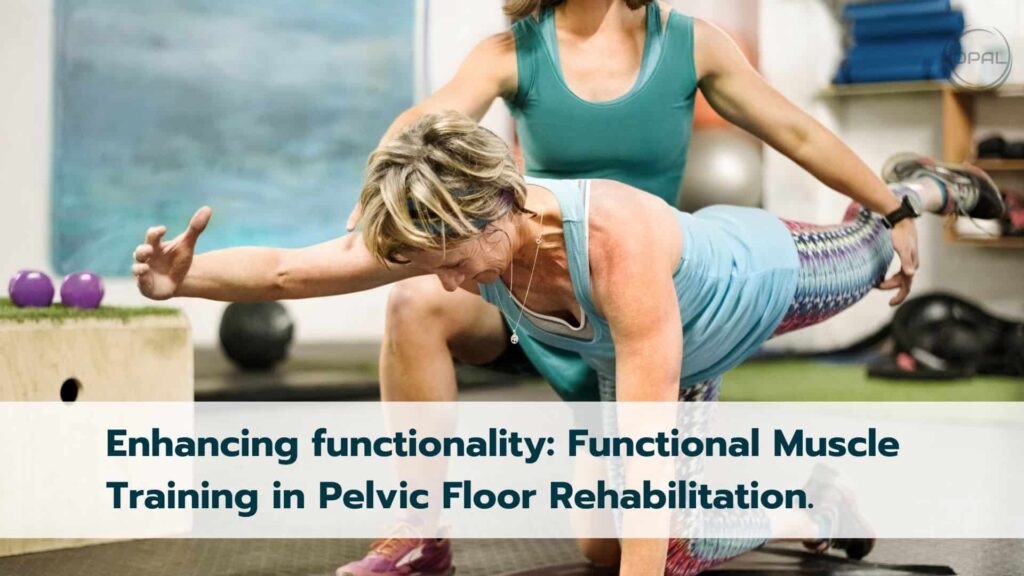
Enhancing functionality: Functional muscle training in pelvic floor rehabilitation.
Functional muscle training is an innovative approach to treating and preventing pelvic disorders. It is a form of exercise that specifically targets the muscles of the pelvis and pelvic floor, which play a crucial role in supporting the pelvic organs and help alleviate symptoms such as urinary incontinence, chronic pelvic pain, and sexual dysfunction.
Unlike traditional Kegel pelvic floor strengthening exercises, functional muscle training in pelvic floor physical therapy focuses on incorporating the pelvic floor muscles into daily activities such as standing, walking, lifting, squatting and running to help improve their strength, coordination, and endurance.
With a focus on whole-body wellness, this training can improve function, increase the quality of life, and reduce the risk of future pelvic floor disorders.
Embrace your inner strength with the benefits of pelvic floor rehabilitation
Pelvic floor rehabilitation has the power to transform your life, offering relief from debilitating symptoms and unlocking your full potential. By embracing awareness, proactivity, and the right treatment, you can reclaim your health, regain confidence, and live life to the fullest.
So if you’re struggling with pelvic floor issues, don’t let them hold you back any longer. Instead, take the first step towards a brighter future and seek out the right pelvic floor physiotherapist today.
In conclusion, pelvic health rehabilitation is a journey of self-discovery and empowerment. By taking control of your health and seeking the proper treatment, you can unlock the potential of your pelvic floor and reclaim your life.
If you’re ready to take the next step towards a healthier, more fulfilling life, then it’s time to schedule a consultation with a pelvic floor physical therapist. You can overcome your symptoms and improve your quality of life and health with the right treatment. So why wait? Book your appointment today and start your journey to pelvic wellness!

Cynthia Pathipati – Registered Physiotherapist
Cynthia Pathipati completed her bachelor’s in physiotherapy and is a qualified Registered Physiotherapist in good standing with the College of Physiotherapists of BC with more than 15 yrs of experience. She has Post-Graduate Credentials and Certifications as well as extensive knowledge experience in treating pelvic floor, orthopedic, neurological, vestibular and pain conditions.

